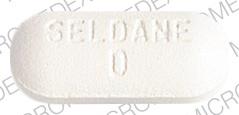Pseudoephedrine/terfenadine and Alcohol/Food Interactions
There are 2 alcohol/food/lifestyle interactions with pseudoephedrine / terfenadine.
Pseudoephedrine Caffeine
Moderate Drug Interaction
Both pseudoephedrine and caffeine can increase blood pressure and heart rate, and combining them may enhance these effects. Talk to your doctor before using these medications, especially if you have a history of high blood pressure or heart disease. You may need a dose adjustment or more frequent monitoring by your doctor to safely use both medications. Contact your doctor if your condition changes or you experience increased side effects. It is important to tell your doctor about all other medications you use, including vitamins and herbs. Do not stop using any medications without first talking to your doctor.
Terfenadine Food/Lifestyle
Major Food Interaction
Consumer information for this interaction is not currently available.
CONTRAINDICATED: The consumption of grapefruit juice has been associated with significantly increased plasma concentrations of terfenadine. The mechanism is inhibition of CYP450 3A4-mediated first-pass metabolism in the gut wall induced by certain compounds present in grapefruits. Terfenadine in high serum levels has been associated with prolongation of the QT interval and development of torsade de pointes, a potentially fatal ventricular arrhythmia.
MANAGEMENT: Due to the risk of cardiotoxicity, patients receiving the drug should be advised to avoid consumption of grapefruit products. Loratadine, cetirizine, and fexofenadine may be safer alternatives in patients who may have trouble adhering to the dietary restriction.
Switch to professional interaction data
Pseudoephedrine/terfenadine drug interactions
There are 566 drug interactions with pseudoephedrine / terfenadine.
Pseudoephedrine/terfenadine disease interactions
There are 6 disease interactions with pseudoephedrine / terfenadine which include:
More about pseudoephedrine / terfenadine
- Check interactions
- Compare alternatives
- Side effects
- Dosage information
- During pregnancy
- Drug class: upper respiratory combinations
Related treatment guides
Drug Interaction Classification
| Highly clinically significant. Avoid combinations; the risk of the interaction outweighs the benefit. | |
| Moderately clinically significant. Usually avoid combinations; use it only under special circumstances. | |
| Minimally clinically significant. Minimize risk; assess risk and consider an alternative drug, take steps to circumvent the interaction risk and/or institute a monitoring plan. | |
| No interaction information available. |
See also:
Further information
Always consult your healthcare provider to ensure the information displayed on this page applies to your personal circumstances.


